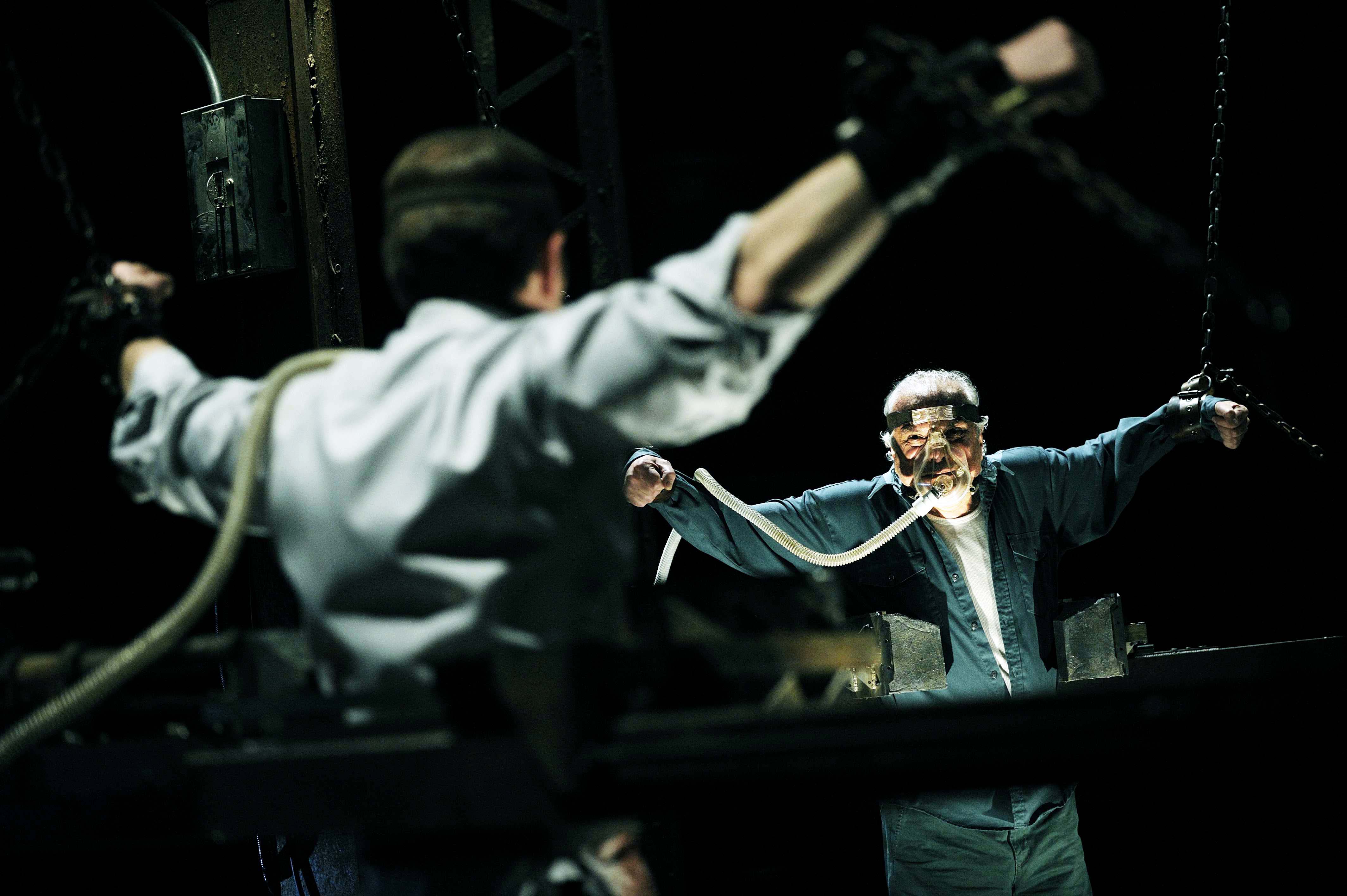The scene is a familiar one: curled up in the fetal position, hands placed over eyes, hearts thumping while watching the victim fumble around the dark house, just a breath away from a gruesome death. The horror movie experience is lingering as well as cathartic, its effects lasting long into the night.
While there is no clear-cut explanation for why people enjoy watching horror films, their popularity in film history is undeniable. From seeing the first quasi-zombie in the 1920 German film “The Cabinet of Dr. Caligari” to anticipating more of Jigsaw’s sadistic antics in the upcoming movie “Saw VI,” which is the latest installment in the popular (and gory) series, hitting theaters on Oct. 23, audiences love going to the movies when the fear factor is involved. This human fascination with being afraid has roots dating back to before movies were even invented.
“Horror is not just a movie phenomenon ““ there are ghost stories and fairy tales that are scary and have been around for hundreds of years,” said Jonathan Kuntz, a professor at the UCLA School of Theater, Film and Television. “In many cultures, actually, European folktales were key to a lot of horror films.”
One appeal of the horror genre may be that it’s universal.
“There might be certain elements (that) horrify and preoccupy some cultures in different ways than other cultures, but there are also horror films that cross boundaries and can be scary anywhere. They can become popular anywhere,” Kuntz said.
The universality of horror movies is associated with the burgeoning theory that people have similar fears all around the world, a commonality on which the horror genre certainly capitalizes.
“A lot of horror movies have to do with people who are mentally unstable in some way and are difficult to predict, and I think that people are afraid of that everywhere,” said Clark Barrett, an associate professor at the UCLA department of anthropology.
While Hollywood has always been good at catering to mainstream audiences’ interests, producing early classic hits such as “Dracula,” “Frankenstein” and Romero’s beloved “Night of the Living Dead,” today the horror genre has broadened to include films from all kinds of cultural and experimental niches. Moving away from the physical grotesqueness of monsters, psychological thrillers have become a huge hit in the moviegoer history, more known for their effects on the viewer’s emotional state rather than their display of visual gore.
“There will be an audience for the slasher, over-the-top visual gore, but there is also a sophisticated audience that likes the historical films of Hitchcock. There’s always an audience for everything, but a sophisticated viewer might appreciate Asian Extreme horror films, (which involve) games of the mind and psychological horror,” said Maria de las Carreras, a professor at the School of Theater, Film and Television.
“I think they’ve carved themselves a niche internationally. For example, (Japanese filmmaker) Takashi Miike has a cult following outside of Japan.”
First-time director Oren Peli had no Hollywood backing when he made “Paranormal Activity,” a low-budget film that uses the same hand-held camera techniques as 1999’s infamous “Blair Witch Project” and whose story of a couple being haunted by a relentless demon has already been deemed one of the scariest movies of this year, not to mention it broke the box-office record for a movie playing at less than 200 theaters.
While violence and gore in the movie is kept to a bare minimum, audiences are drawn into the couple’s horrific experience and kept on the very edge of suspense, which are key elements in many psychological horror films.
“Even though “˜Paranormal’ wasn’t that scary, it was really creepy and spooky in its understatement. I’m still thinking about that movie because its ideas were terrifying and your imagination can supplement the rest,” said Mila Zuo, a graduate student at the School of Theater, Film and Television.
And of course, no horror movie experience is complete without the adrenaline rush that accompanies the screams on the screen.
“There may be an incentive to watch (horror movies) because you are getting a kind of vicarious experience without paying the cost of the actual risk,” Barrett said.
Indeed, horror films give audiences ““ particularly young audiences ““ a safe outlet to test and overcome certain limitations when it comes to fear, a process that is in itself gratifying.
“A favorite children’s game is hide and seek, or “˜disappearance.’ Some say that returning to this again and again promotes mastery of the situation, so it is not the fear that drives the behavior but rather the desire to overcome fear and reach some mastery and understanding,” said Bernie Weiner, a professor at the UCLA department of psychology.
It’s even been suggested in some studies that over time, humans have evolved to enjoy fear.
“People have a healthy desire to be scared, just as they desire to laugh or cry sometimes,” Zuo said. “It’s a good horror movie if your body can feel it.”
